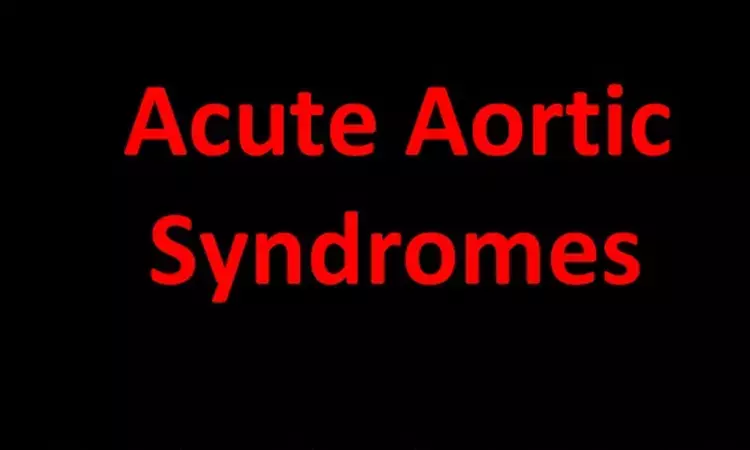- Home
- Medical news & Guidelines
- Anesthesiology
- Cardiology and CTVS
- Critical Care
- Dentistry
- Dermatology
- Diabetes and Endocrinology
- ENT
- Gastroenterology
- Medicine
- Nephrology
- Neurology
- Obstretics-Gynaecology
- Oncology
- Ophthalmology
- Orthopaedics
- Pediatrics-Neonatology
- Psychiatry
- Pulmonology
- Radiology
- Surgery
- Urology
- Laboratory Medicine
- Diet
- Nursing
- Paramedical
- Physiotherapy
- Health news
- Fact Check
- Bone Health Fact Check
- Brain Health Fact Check
- Cancer Related Fact Check
- Child Care Fact Check
- Dental and oral health fact check
- Diabetes and metabolic health fact check
- Diet and Nutrition Fact Check
- Eye and ENT Care Fact Check
- Fitness fact check
- Gut health fact check
- Heart health fact check
- Kidney health fact check
- Medical education fact check
- Men's health fact check
- Respiratory fact check
- Skin and hair care fact check
- Vaccine and Immunization fact check
- Women's health fact check
- AYUSH
- State News
- Andaman and Nicobar Islands
- Andhra Pradesh
- Arunachal Pradesh
- Assam
- Bihar
- Chandigarh
- Chattisgarh
- Dadra and Nagar Haveli
- Daman and Diu
- Delhi
- Goa
- Gujarat
- Haryana
- Himachal Pradesh
- Jammu & Kashmir
- Jharkhand
- Karnataka
- Kerala
- Ladakh
- Lakshadweep
- Madhya Pradesh
- Maharashtra
- Manipur
- Meghalaya
- Mizoram
- Nagaland
- Odisha
- Puducherry
- Punjab
- Rajasthan
- Sikkim
- Tamil Nadu
- Telangana
- Tripura
- Uttar Pradesh
- Uttrakhand
- West Bengal
- Medical Education
- Industry
New Canadian guideline for diagnosing acute aortic syndrome released

A new Canadian guideline for Diagnosis of acute aortic syndrome has been released and published in CMAJ (Canadian Medical Association Journal).The aims of this guideline are to update the available guideline recommendations with current evidence; include key stakeholders to allow interpretation of the evidence in context of values and preferences; and make practice recommendations that are applicable to the Canadian health care system.
Acute aortic syndrome (AAS) is a life-threatening condition that underlies 1 in 2000 visits to the emergency department for severe chest or back pain. The rate of misdiagnosis is estimated to be as high as 38%, and the risk of death can increase 2% for every hour of delay in diagnosis.
The target audience for the guideline includes emergency physicians, primary care clinicians, internists, radiologists, vascular surgeons, cardiothoracic surgeons and critical care physicians as well as decision-makers and patients.
"This guideline is intended as a resource for practising clinicians, both as an evidence base and a guide to investigation for this high-risk aortic catastrophe," writes Dr. Robert Ohle, an emergency physician at the Health Science North Research Institute, Northern Ontario School of Medicine, Sudbury, Ontario, with coauthors.
Recommendations include:
- Assessment of risk factors, pain features and high-risk physical exam findings to establish pre-test disease risk
- Risk factors include connective tissue disease, aortic valve disease, recent aortic procedure, aortic aneurysm and family history of AAS
- High-risk pain includes sudden-onset or thunderclap pain, severe or worst-ever pain, tearing, migrating or radiating pain
- High-risk physical exam findings include aortic regurgitation, pulse deficit, neurological deficit and hypotension/pericardial effusion
- Diagnostic strategy
- The guideline recommends no investigation of those at low risk, D-dimer testing of people of moderate risk and immediate electrocardiogram-gated computed tomography (CT) of the aorta for high-risk individuals
To help with decision-making, the guideline group created a clinical decision aid to accompany the guideline.
The guideline can be adapted by clinicians based on local circumstances, as a one-size-fits-all approach may not be feasible.
"This document may serve as a basis for adaption by local, regional or national guideline groups," write the authors. "For example, guideline implementation in an urban centre with 24-hour access to CT may differ from a rural or remote location that requires transfer of a patient with accompanying staff."
For more details click on the link: https://doi.org/10.1503/cmaj.200021
Hina Zahid Joined Medical Dialogue in 2017 with a passion to work as a Reporter. She coordinates with various national and international journals and association and covers all the stories related to Medical guidelines, Medical Journals, rare medical surgeries as well as all the updates in the medical field. Email: editorial@medicaldialogues.in. Contact no. 011-43720751
Dr Kamal Kant Kohli-MBBS, DTCD- a chest specialist with more than 30 years of practice and a flair for writing clinical articles, Dr Kamal Kant Kohli joined Medical Dialogues as a Chief Editor of Medical News. Besides writing articles, as an editor, he proofreads and verifies all the medical content published on Medical Dialogues including those coming from journals, studies,medical conferences,guidelines etc. Email: drkohli@medicaldialogues.in. Contact no. 011-43720751


